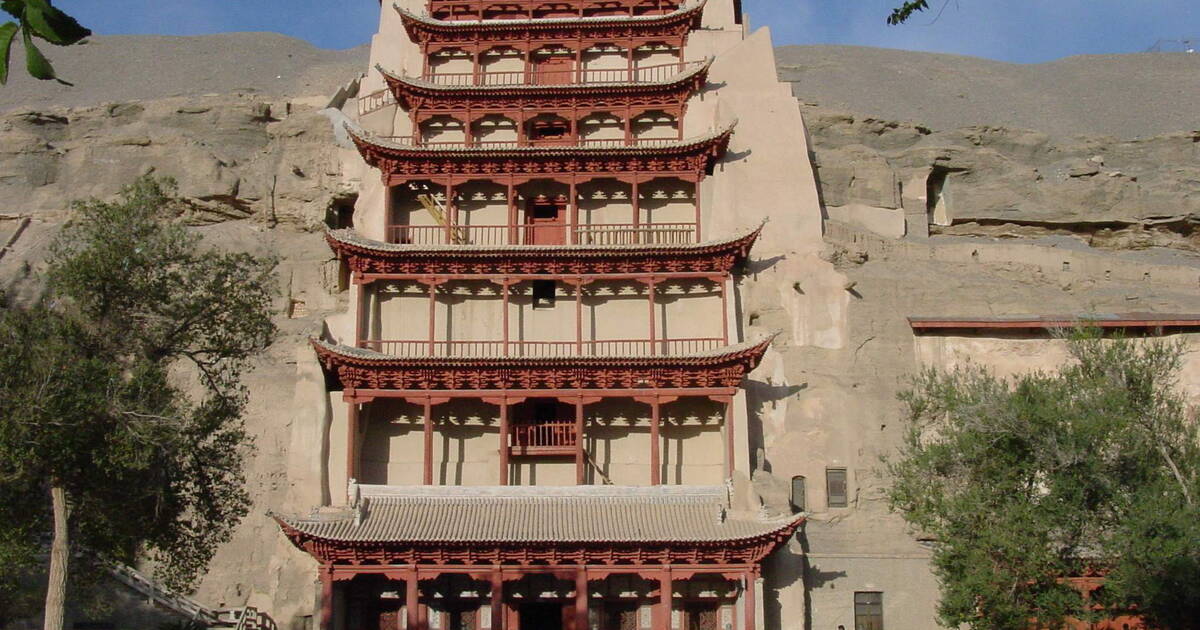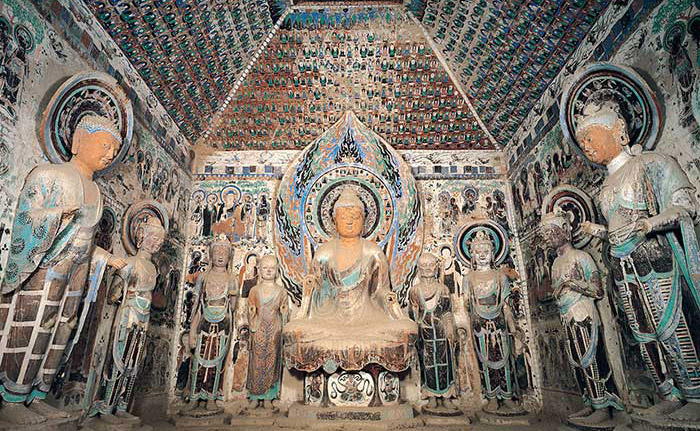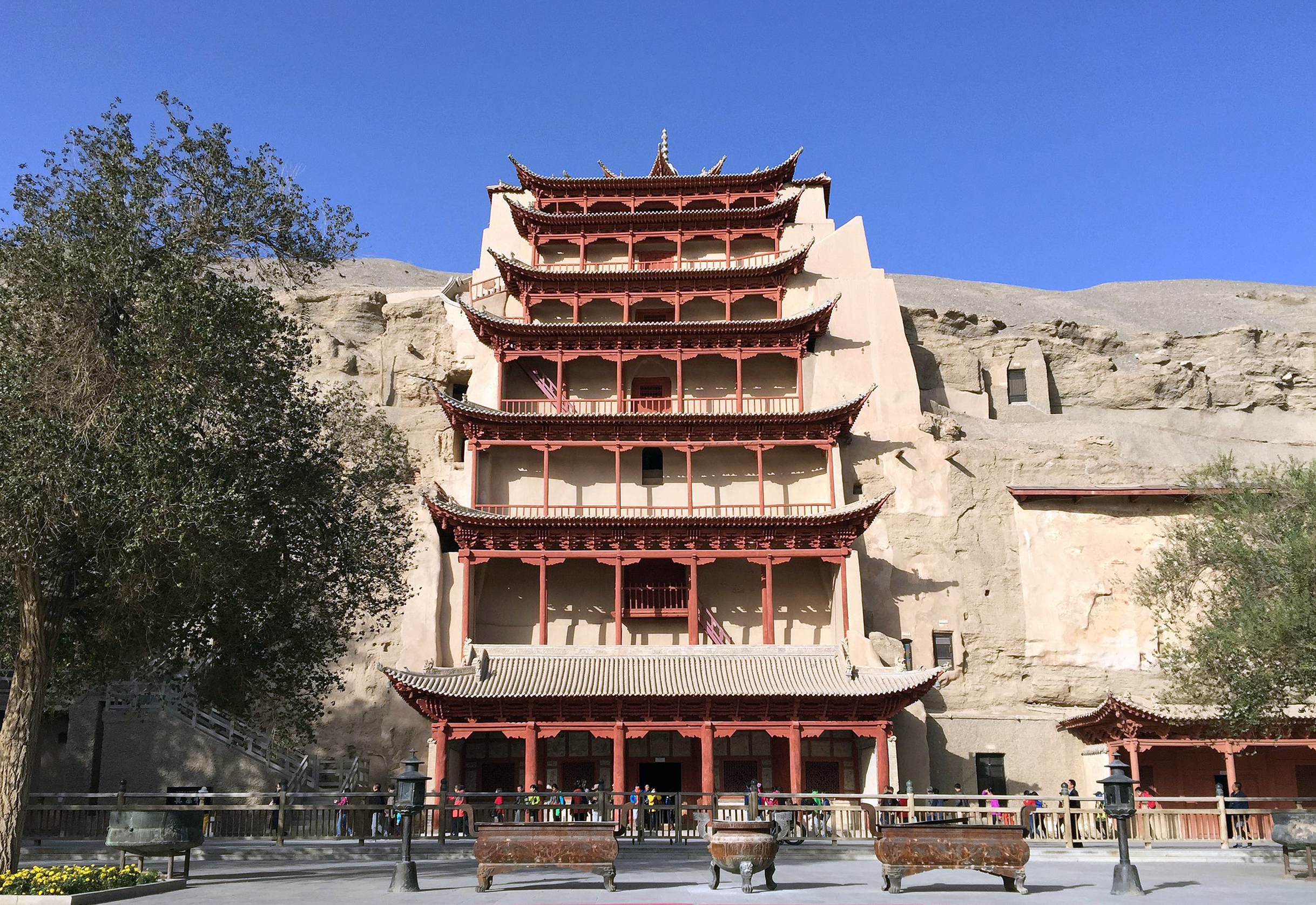Visiting Dunhuang’s Mogao Caves and Silk Road Art
Imagine stepping into a hidden world where ancient Buddhist artistry meets the echoes of ancient trade routes – that’s the magic of Dunhuang Mogao Caves. Nestled in the remote sands of Gansu Province, these incredible caves are a cornerstone of Dunhuang cultural heritage, showcasing the vibrant fusion of China Silk Road art that has captivated travelers for centuries. As a top cultural attraction in Dunhuang, they offer an unparalleled glimpse into China’s rich historical tapestry, making it a must-visit for anyone exploring China history travel. Here at jusha.travel, we love sharing tips to make your China journey unforgettable, so let’s dive into this timeless wonder and uncover how it can inspire your next adventure.
Historical Overview of the Mogao Caves

The story of the Dunhuang Mogao Caves begins over 1,600 years ago, in 366 AD, when a monk named Lèzūn is said to have envisioned a thousand Buddhas in the cliffside, sparking the creation of this monumental site. These 492 interconnected cave temples, carved into the sandstone cliffs near Dunhuang, were developed over a millennium, from the Sixteen Kingdoms period through to the Yuan dynasty. At their peak during the Tang dynasty (7th–10th centuries), they became a beacon of Dunhuang cultural heritage, funded by merchants, nobles, and pilgrims traveling along the Silk Road.
This site is a living testament to China history travel, reflecting the dynamic exchanges of the era. For more on the historical context, check out the UNESCO World Heritage listing, which highlights how the caves evolved as places of meditation, worship, and cultural convergence. As you wander through, you’ll feel the weight of history – from the early Buddhist monks who carved these sanctuaries to the diverse influences that shaped them. It’s not just about the past; it’s a reminder of how China Silk Road art bridged East and West, fostering connections that still resonate today. Explore similar ancient wonders like the Terracotta Warriors for more insights into China’s heritage.
Exploring the Artworks and Murals

Step inside the Dunhuang Mogao Caves, and you’re immediately enveloped by a feast for the eyes: over 45,000 square meters of murals and more than 2,000 sculpted figures that bring China Silk Road art to life. These masterpieces range from intricate wall paintings depicting Buddhist sutras and Jataka tales – stories of the Buddha’s past lives – to towering statues of enlightened beings. The artistry is a melting pot of styles, blending Indian, Central Asian, Tibetan, and Han Chinese influences, all hallmarks of Dunhuang cultural heritage.
One of the most fascinating aspects is how these caves served as a visual encyclopedia of medieval life. Murals portray everything from trading caravans and musicians to agricultural scenes and military processions, offering insights into the daily rhythms of Silk Road society. According to resources like the Getty Museum’s exhibition on Cave Temples, the innovative techniques used here, such as layered pigments and perspective in paintings, were groundbreaking for their time. For a fuller picture of China’s historical sites, check out guides like historical places in China. As a traveler keen on Dunhuang travel guide essentials, don’t miss the chance to join a guided tour – it’s the best way to appreciate these details while learning about ongoing conservation efforts that use modern technology to protect the artworks from environmental damage.
If you’re a culture enthusiast, consider pairing your visit with local culinary experiences. Dunhuang’s proximity to the Silk Road means you can savor dishes like lamb skewers or hand-pulled noodles, influenced by the same cross-cultural exchanges that shaped the caves. This blend of art and flavor makes for an immersive China history travel experience, showing how food and culture intertwined along these ancient routes.
Cultural Significance and Practical Tips for Visiting

The Dunhuang Mogao Caves stand as one of the world’s greatest cultural attractions in Dunhuang, symbolizing the profound exchanges of the Silk Road. This site isn’t just about beautiful art; it’s a window into how Buddhism spread across Asia, with iconography that merges spiritual narratives with everyday life. For instance, the discovery of the “Library Cave” (Cave 17) in 1900 unearthed thousands of manuscripts in multiple languages, from Sanskrit to Uyghur, underscoring the caves’ role in global knowledge transfer. As detailed in the Harvard Divinity Bulletin, these finds highlight Dunhuang as a cultural embassy, where ideas flowed freely.
To make the most of your visit, here’s a practical Dunhuang travel guide tailored for modern explorers. First, book tickets in advance through official channels, as only a select number of caves are open at any time to preserve their delicate state – a smart use of technology in heritage management. Aim for the cooler months between April and October to avoid the desert heat, and consider a digital tour option if you can’t visit in person; many apps now offer virtual reality experiences of the murals. For more on planning trips to ancient sites, check out Silk Road tours.
While you’re in the area, embrace more of China Silk Road art by exploring nearby sites like the Crescent Moon Lake or sampling Gansu’s famous cumin-laced cuisine. For families or solo travelers, pack comfortable walking shoes and stay hydrated, as the site involves some terrain. And if you’re traveling with a group, look for eco-friendly tours that minimize your footprint, aligning with sustainable practices we often highlight at jusha.travel.
Legacy and Modern Reflections

Beyond their historical allure, the Dunhuang Mogao Caves continue to inspire as a pillar of Dunhuang cultural heritage. Often called a “museum on the wall,” this site encapsulates the essence of China Silk Road art, where murals not only depict religious motifs but also scenes of multicultural harmony. From the Sui Dynasty’s trade illustrations to the Tang’s elaborate bodhisattva figures, the caves illustrate how art evolved with societal changes. Drawing from sources like the Wikipedia page on Mogao Caves and Mainly Museums, it’s clear that these artworks remain relevant, influencing contemporary Chinese culture and even global art conservation techniques.
In today’s world, technology plays a key role in preserving and sharing this heritage. Virtual tours and digital archives allow people worldwide to experience the caves without traveling, blending ancient wonders with modern innovation – a perfect nod to China’s tech-savvy travel scene. Whether you’re a history buff or a casual visitor, the Mogao Caves remind us of the enduring power of cultural exchange. For those interested in more UNESCO sites, explore historical places in China.
As we wrap up this journey through the Dunhuang Mogao Caves, remember that these treasures are more than just stone and paint; they’re a gateway to understanding China history travel and the vibrant tapestry of China Silk Road art. We’ve only scratched the surface of what makes Dunhuang cultural heritage so enchanting, and exploring it firsthand can truly enrich your travels. Here at jusha.travel, we’re passionate about guiding you through China’s hidden gems, so why not check out more articles on our site for inspiration? Share your thoughts in the comments below, tell us about your own Silk Road adventures, or visit jusha.travel for more tips and guides. Let’s keep the conversation going – safe travels!

